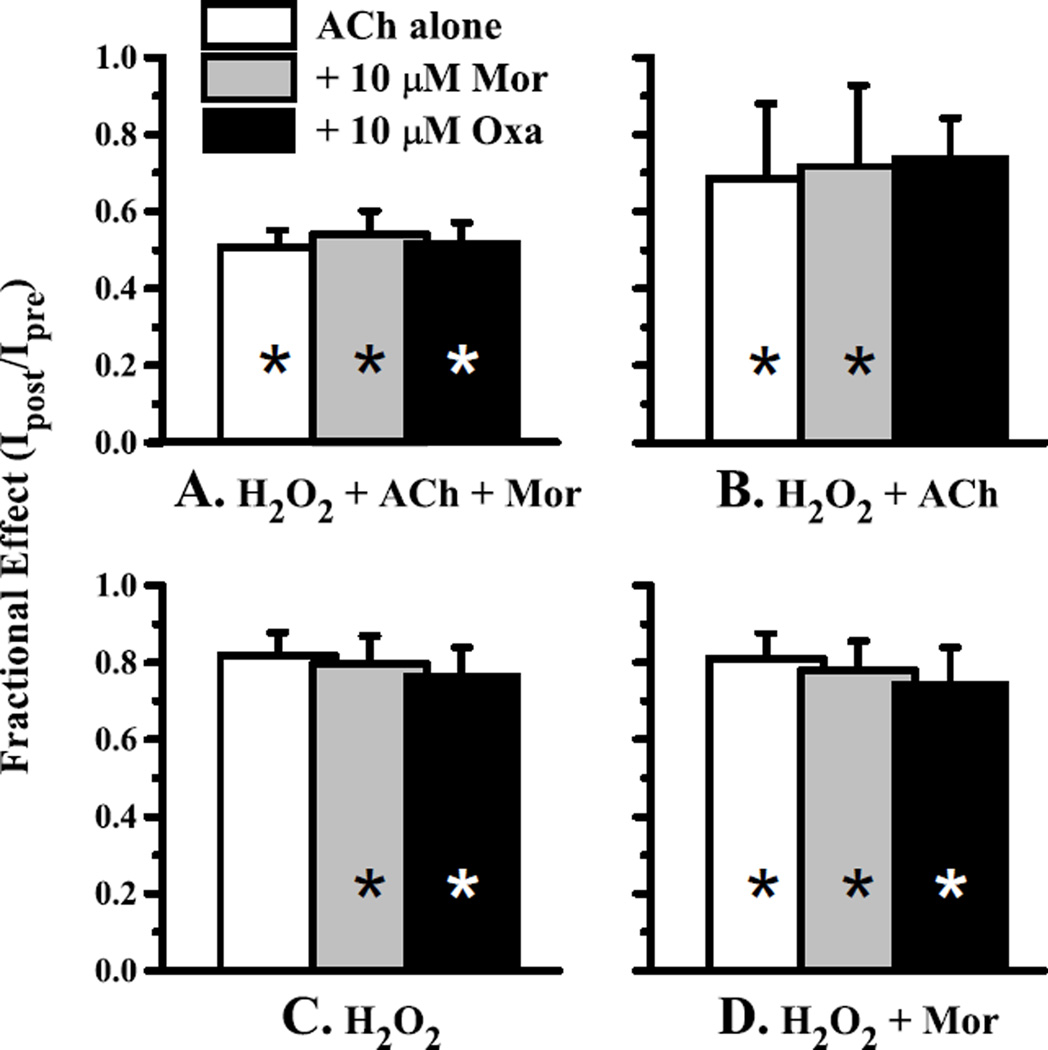Figure 4.
Oxidation of the α3Y168Cβ2D190C receptor decreases activation. Currents evoked by 1 mM ACh alone (open bars) or in combination with 10 µM Mor (gray bars) or 10 µM Oxa (black bars) were measured before and after four oxidation treatments for the double-cysteine mutant α3Y168Cβ2D190C; the fractional current remaining (Ipost/Ipre) is plotted. In each case, the H2O2 concentration was 4.4 mM and the oxidation treatment lasted 5 min; each condition was tested in a separate experiment. The treatments were A. H2O2 co-applied with 100 mM ACh and 10 µM Mor (n = 6); B. H2O2 with 100 mM ACh (n = 5); C. H2O2 alone (n = 8) and D. H2O2 with 10 µM Mor (n = 5). All changes upon treatment were significant at p < 0.05 (range 0.0045–0.047) and are denoted with an asterisk, except C. ACh alone (p = 0.115) and B. ACh + Oxa (p = 0.069). Representative traces for the 4.4 mM H2O2/100 µM ACh/10 µM Mor oxidation condition are shown in Fig. 2.

